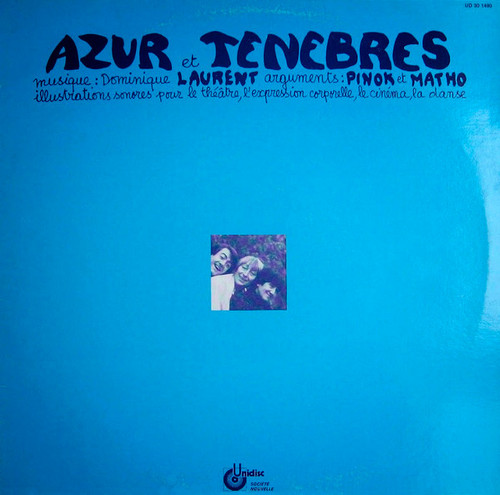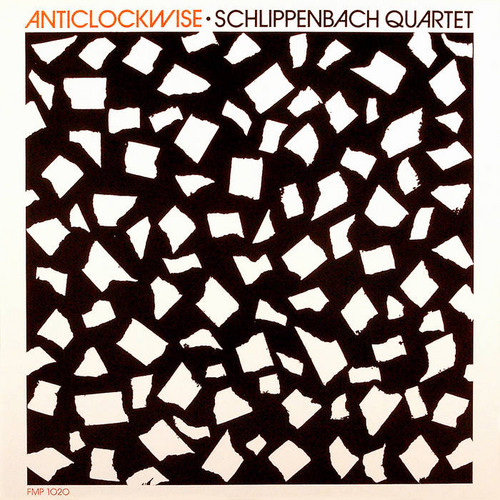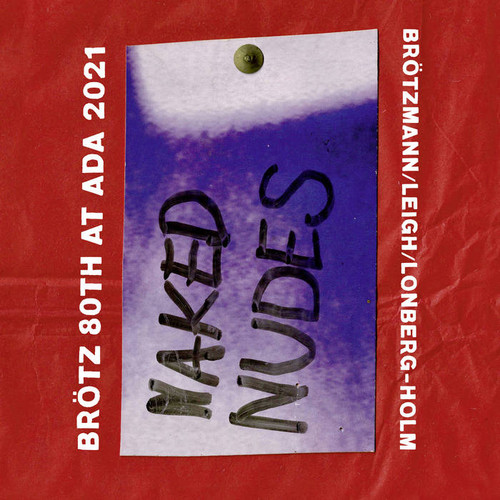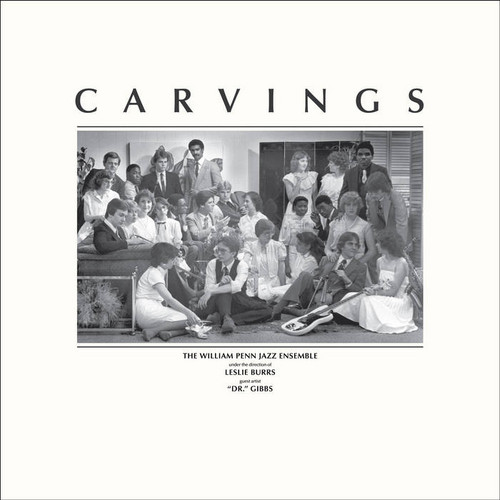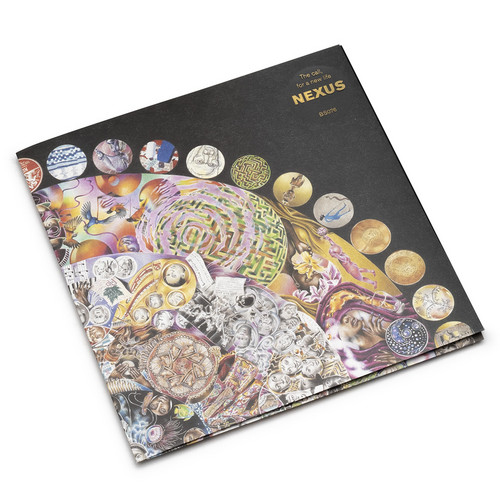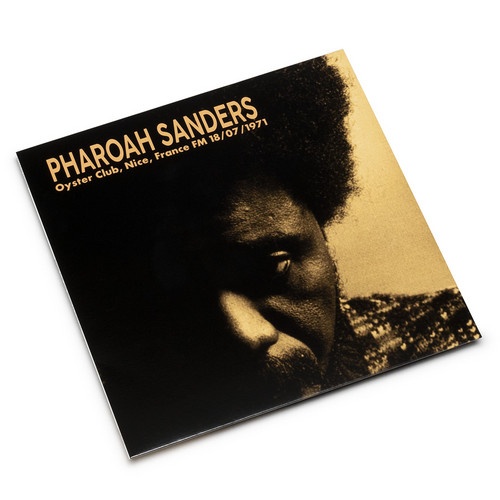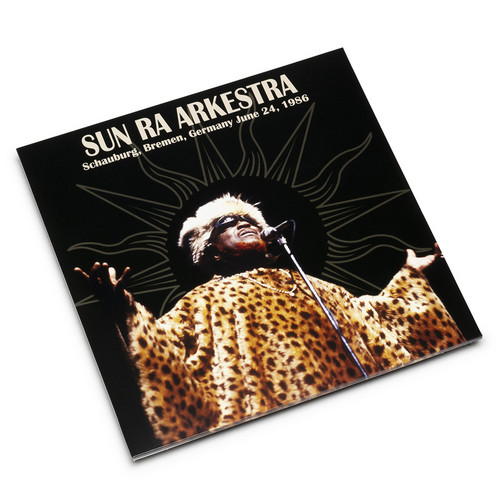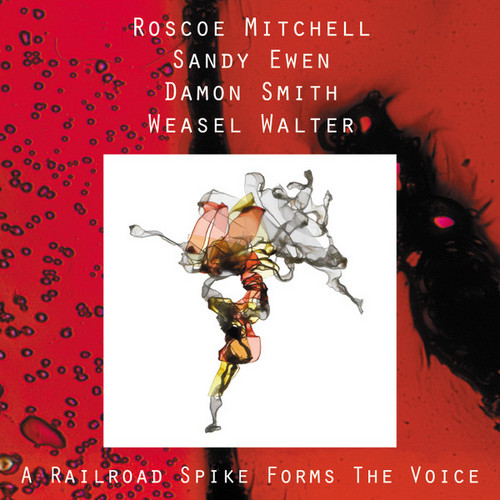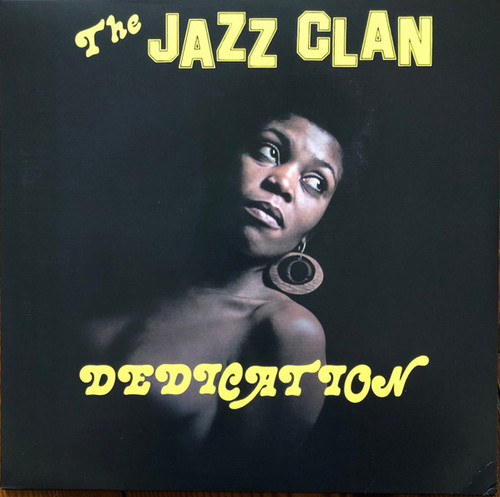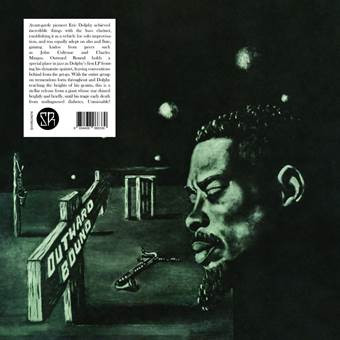Jazz /
Azur Et Tenebres
*Rare original* "As you can tell from the additional description to the album title, this album and the compositions on it are a collection of sound illustrations for performances, performances, dances, films and plays (mostly in the spirit of early cinematography and early century theatre, one would think). Illustrations, stylistically very different. From rather sad interludes, which for some reason remind me personally of films like Silence, Sadness, Silence with to 'saspienza' moments, with…
Aïré
*Rare original* French project combining flamenco and jazz. The music is reminiscent of recent bands around Ultra High Flamenco, recorded in 1985 at the Centre Autonome D'experimentation Sociale in Ris-Oragis, a suburb south of Paris on the Seine River. It sounds like an extension of sextet, innovatively brought bass, cajón and saxophone to flamenco. It's strange that neither the other works nor this project have attracted much attention, but they are unusually accomplished: the level of perform…
Ślina Trzaska
The Wrocław band Ślina returns with their third studio album, this time recorded with Mikołaj Trzaska. This is not the album of Trzaska + Ślina or Ślina + Trzaska. This is Ślina Trzaska (a kind of wordplay in polish, means: The saliva cracks). A kind of full, new band that was created in the outstanding Sudeten studio Monochrom and is sometimes continued live.
Free improvisations and Krautrock motility are still the hallmark of Ślina, but the organic, radical sound of Mikołaj Trzaska's saxophone…
World Of Objects
Recorded live in concert in the fall of 2013, "World of Objects" is an intense and confounding document of 21st century improvised music. Featuring Evan Parker, a singular musician whose approach to music and the saxophone has influenced several generations of improvisers, in trio with trumpet great Nate Wooley and clarinetist Jeremiah Cymerman, "World of Objects" is both a concert document and an intricate journey through the digital post-production of Jeremiah Cymerman. Over the course of thre…
John Tchicai With Strings
2023 Repress Knockout! Real spiritual jazz — frank, deep, reaching; no fakery. John Tchicai appears on Ascension and Albert Ayler’s New York Eye And Ear Control; he’s on Witchdoctor’s Son, with Johnny Dyani and Dudu Pukwana, besides landmark recordings with Archie Shepp, including Four For Trane; and his Mohawk LP on Fontana is a five-star affair. Yet still Richard Williams in The Guardian reckoned this ‘wise and lyrical’ album ‘one of his best recordings’. Here his playing is somewhere new, osc…
Time Capsule
The impact of Weldon Irvine’s music across a wealth of genres cannot be overstated with his jazzy piano playing and compositions regularly passed down to newer generations. Artists like Q-Tip and Mos Def are noted admirers of the jazz-funk artist, and the distinct sounds of Irvine echo across the ages in samples etched into hip-hop history. The album version of Time Capsule was originally released in 1973, and this is a brand new 10 inch EP edit aimed at DJs looking to incorporate its album trac…
Anticlockwise
"The edges of Schlippenbach’s trio/quartet music have gradually feathered over the past dozen years, a process benchmarked by “Anticlockwise”. Evan Parker’s careening tenor prompts a dramatic sweep from the group that echoes Coltrane’s last period, as on Ore; his multiphonic-oriented soprano style elicits a more spiky rapport. The exceptional American bassist Alan Silva makes an intriguing debut with the quartet, his incisive phrasing and nuance-filled arco technique serving as a lynchpin betwee…
Naked Nudes
Recorded at ADA in Peter Brötzmann’s hometown Wuppertal as part of his 80th birthday concerts, Naked Nudes brings together two of his most unusual collaborators, Heather Leigh (pedal steel guitar) and Fred Lonberg-Holm (cello) for one of the most elegiac releases in his discography. The relationships between the players are tonally odd: woozy, mournful, almost baroque blues or even more chamber music in feel, the quality of the interplay is subtle and natural, like modern ballads. In the recordi…
Carvings
The William Penn Jazz Ensemble was formed by American composer and flutist Leslie Burrs. Throughout the 1970s, Leslie performed with several major jazz and funk artists, including Grover Washington Jr., Kool & The Gang, and most notably, with Del Jones for the now cult album Positive Vibes.
Carvings, recorded in 1982, holds a special place in Leslie's career. This album showcases Leslie's musical versatility and features clear influences of both jazz and classical music. The Ensemble's uncommon …
Meditations
2023 small repress. The year 1965 was a turning point in the life of John Coltrane. It was at this point that he crossed the line into the free jazz arena that he had been approaching since the early '60s. Besides his landmark Ascension, no album better illustrates this than the awe-inspiring Meditations. Coltrane's regular quartet -- McCoy Tyner (piano), Jimmy Garrison (bass), and Elvin Jones (drums) -- is expanded here with second drummer Rashied Ali (who assumed Jones' spot after this album) …
Yeahno Yowouw Land
Sing a song fighter is proud to release this amazing debut album hand in hand with our Italian label friends Black Sweat Records: Spiritual Jazz paths always open up unexplored dimensions, this is the clear impression revealed by this superb and ambitious first double album by Lina Langendorf and her new band. The Swedish saxophonist (OK Star Orchestra, James Yorkston, Nina Persson & The Second Hand Orchestra) seems to be blowing in the lesson of the great sacred monsters of the instrument such …
The Call: For A New Life
* Edition of 300. Spectacular four-panel gatefold cover * Since the early 1980s, the Nexus creature has represented one of the most interesting realities of the Italian jazz scene. Daniele Cavallanti (Aktuala) and Tiziano Tononi (Moon On The Water and D.O.M Alia Orchestra) realize a sensational mix of orchestral praxis and impro-free jazz. The strength lies in the ensemble's variety of timbres, in that precise hybrid of styles reminiscent of the cross-sectional experiences of the 1970s of Zappa,…
18 July 1971 Nice, France
This is tenor sax giant Pharoah Sanders caught live in France in summer 1971, when the man was still in full post-Coltrane mood. At the head of a strong quintet featuring: Lonnie Liston Smith - piano, Cecil McBee - bass, Jimmy Hopps - drums, and Lawrence Killian - congas, Pharoah delivers two very intense yet serene versions of his milestone piece "The Creator Has A Master Plan" and "Let Us Go In The House Of The Lord", a traditional gospel hymn arranged by Lonnie Liston Smith. This is deep spir…
Live At Schauburg Bremen 1986
Recorded live on tour in Germany in 1986, here we have "Mystery Mr. Ra" leading a quite rare tentet version of the Arkestra featuring the historical reed section of John Gilmore, Marshal Allen, Eloe Omoe, Danny Ray Thomson and James Jackson, plus trombonist Tyron Hill and an electric rhythms section featuring Marvin "Boogaloo" Smith on drums. This is a beautiful document from an era when Ra, in addition to his usual sound explorations and space hymns, began to introduce a good number of jazz sta…
A Railroad Spike Forms The Voice
*2023 stock* "Don’t follow.” That’s the admonition saxophonist and composer Roscoe Mitchell (b. 1940) was known to give his students at Oakland’s Mills College in one-on-one sessions. In musical communication and creation, not following or directly responding to others is central to Mitchell’s philosophy and approach. As he said to me in a recent conversation, “I just let things develop with my intent, with my work, and I’ve never been a person that went around looking for people to play with. I…
Soft Samba Live! Jazz From The Penthouse
From the great cache of tapes recorded at Seattle's storied Penthouse nightclub comes The Gary McFarland Quintet, recorded live in the summer of 1965. McFarland could usually be found in the recording studios of New York arranging for everyone from Stan Getz to Lena Horne, but his 1964 bossa-jazz classic LP Soft Samba was such an unexpected hit that it afforded McFarland the opportunity to hit the road with fellow Berklee School of Music alumni Gabor Szabo on guitar and Sadao Watanabe on flute a…
Dedication
Gordon Micky Mfandu was the original leader of “The Clan”, founded as a sixteen-piece band by trombonist Reuben Boy Radise in 1970. This 1973 recording was made following the untimely murder of Mfandu outside his home in Pimville, Soweto. The last track written by Peter Segona and Dimpi Tshabalala is dedicated to Mfandu. Mfandu was also the drummer for the Soul Giants’ “I Remember Nick”, recorded in 1968. According to the band, their music is no carbon copy of somebody’s. ‘We’re trying to be ou…
Lightning Dreamers
Lightning Dreamers is new work by composer, trumpeter, interdisciplinary abstractivist and modern music mogul Rob Mazurek, who wrote the music for a compacted version of his long-running Exploding Star Orchestra. A follow-up to the acclaimed 2020 Mazurek/ESO release Dimensional Stardust, the album features guitarist Jeff Parker, vocalist Damon Locks, drummer Gerald Cleaver, and pianists Angelica Sanchez and Craig Taborn, among others. It was recorded mostly at the remote Sonic Ranch studios in W…
Outward Bound
*In process of stocking* Avant-garde pioneer Eric Dolphy achieved incredible things with the bass clarinet, establishing it as a vehicle for solo improvisation, and was equally adept on alto and flute, gaining kudos from peers such as John Coltrane and Charles Mingus. Outward Bound holds a special place in jazz as Dolphy’s first LP fronting his dynamite quintet, leaving conventions behind from the get-go. With the entire group on tremendous form throughout and Dolphy reaching the heights of his …

